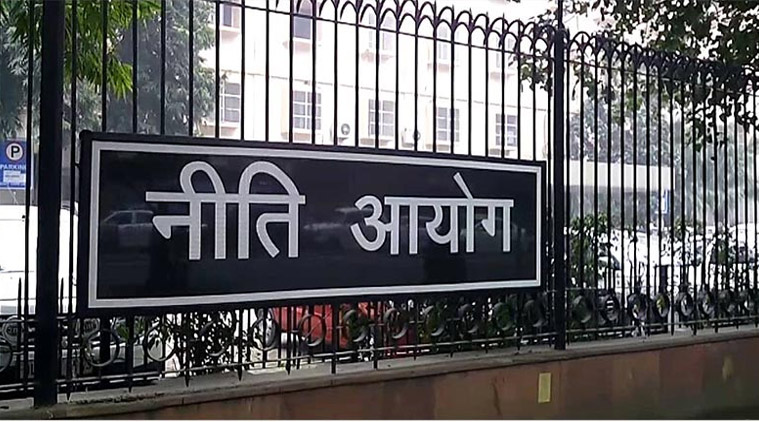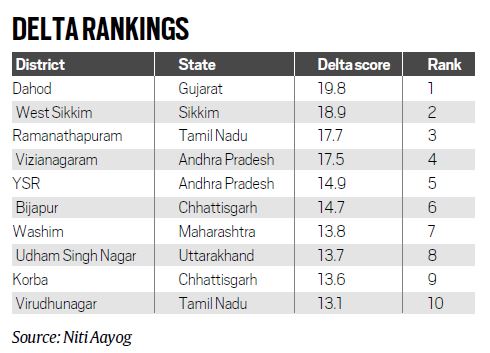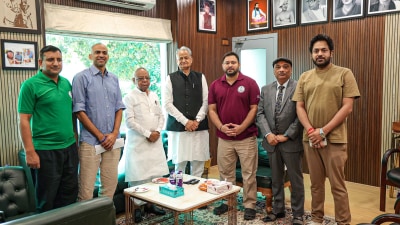Niti Aayog rankings: Dahod most ‘aspirational’ district in India, Kupwara least
49 key performance indicators have been mapped across five areas: Health and nutrition, education, agriculture and water resources, financial inclusion and skill development, and basic Infrastructure
 Incremental progress measured across five developmental areas
Incremental progress measured across five developmental areas
The Niti Aayog on Friday released the first Delta ranking for 108 “aspirational districts” to measure their incremental progress across five developmental areas during a two month period of April and May this year. Dahod district of Gujarat improved 19.8 points to be first in the Delta ranking. West Sikkim district in Sikkim stood second with 18.9 points. For these rankings, total 49 key performance indicators have been mapped across five developmental areas: health and nutrition, education, agriculture and water resources, financial inclusion and skill development, and basic Infrastructure.
Ramanathapuram district of Tamil Nadu and Vizianagaram district of Andhra Pradesh has been ranked third and fourth in the list of “most improved districts,” respectively.
While releasing the Delta rankings, Niti Aayog Chief Executive Officer (CEO) Amitabh Kant clarified: “If we go to baseline (ranking), then everyone will start talking about baseline only … that is not our aim. We will issue baseline rankings after one year.”

He added: “The purpose of this ranking is to spur a sense of competition among the dynamic teams in the districts. Since these districts face many challenges including legacy, unexploited or weak resource base, deficit of manpower at different levels due to difficult living conditions etc, the ranking is also a tool to identify sectors and indicator specific challenges so that Team India, which is driving this programme, can take immediate corrective measures.”
The districts started entering data from April 1, 2018 in the “Champions of Change” dashboard. 108 districts out of total 112 participated in this ranking.
Data entry by remaining four districts is also in progress, though they are not part of the ranking released on Friday.
Kupwara in Jammu and Kashmir, Begusarai in Bihar, Ranchi in Jharkhand, Simdega in Jharkhand and Khagaria in Bihar were listed as first to fifth, respectively, in “least improved states” in the delta rankings released on Friday.
Some of the data points for this ranking have been sourced from ministries of central government, including those of financial inclusion, skill development and three indicators of basic infrastructure. Most of the data points, however, have been self-reported by the various districts themselves.






- 01
- 02
- 03
- 04
- 05

























